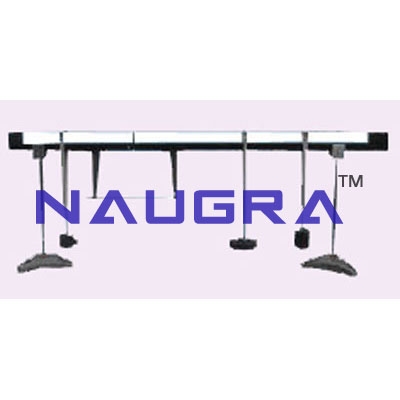- Civil Lab Mechanical Lab Engineering Lab Equipments
- sales@didacticlabequipments.com

CAT NO: DIDACTICNLE-Export-056003
Bending Moment Apparatus- Engineering Lab Training Systems.
Features
Low cost, effective teaching
Self-contained
Bench mounted
Experimental determination of bending
moment at a beam section
Loads and supports can be placed in
any position
Visual vertification of the nature of
bending moment
Allows investigation of stability and
influence lines
Reinforces concept of equilibrium of
vertical forces and moments
Three year warrant
Range of Experiments
To comprehend the action of moment of resistance in a beam
To measure the bending moment at a section of a loaded beam and to compare with a theoretical estimate
To study the definition of an influence line for bending moment
Description
A
length of material supported horizontally and carrying vertical loads
is called a beam. The loading causes bending and transverse shearing.
The loads and reactions are the 'external' forces acting on the beam.
They must be in equilibrium. However, the strength of the beam depends
on 'internal' forces or moments. This experiment demonstrates the nature
of these internal forces and their dependence on the external system of
forces.
The experimental beam is in two parts, joined together
by a pair of low friction ball bearings. An underslung spring balance
provides a resisting moment, and also allows the section bending moment
to be measured. A hinged metal strip to simulate the loading pattern of
panelled girder for a more advanced experiment on influence lines is
available.
The beam is simply supported on end bearings and
several weight hangers can be attached at any position on either side of
the hinge.
This equipment is part of a range designed to both
demonstrate and experimentally confirm basic engineering principles.
Great care has been given to each item so as to provide wide
experimental scope without unduly complicating or compromising the
design. Each piece of apparatus is self-contained and compact. Setting
up time is minimal, and all measurements are made with the simplest
possible instrumentation, so that the student involvement is purely with
the engineering principles being taught. A complete instruction manual
is provided describing the apparatus, its application, experimental
procedure and typical test results.
